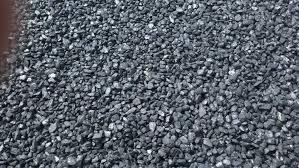Benefits of Anthracite Carbon Media for Municipal Potable Water Treatment Applications?

Treating water to be potable quality requires fairly considerable treatment based on initial water quality. Many tend to jump straight to thinking about more technologically advanced treatments like reverse osmosis and similar technologies. Of course, there is a bit more involved in drinking water treatment for municipalities based on inlet water quality. For simpler drinking water treatment applications, Anthracite carbon media has been used extensively in municipal water filtration system applications in the US and around the world.
Filtration is a key part of most water treatment systems, and selecting the right system can be a delicate matter. Media filtration is quite frequently used by municipalities for drinking water treatment. One particular filtration media that is used is anthracite carbon media.
In this article, I am going to outline a few of the benefits of anthracite filtration media for treating drinking water for municipal applications.
Basics of Anthracite Carbon Media
Anthracite is a form of coal that is compact and hard with a high carbon content. These properties make anthracite useful for more than energy production, though it is known as one of the cleanest and highest energy producing forms of coal. Unlike its relative, bituminous coal, anthracite is not typically used as a source for activated carbon mainly because it is not as easy to activate as bituminous coal.
Benefits:
Can be added to existing sand filters
There are times when a municipality begins to encounter issues with a water treatment system that they already have in place. Unfortunately, replacing those systems for new ones can get expensive. However, in the case of sand filters, it’s potentially possible to retrofit these filters by the addition of Anthracite carbon media. Whether the issue is excessive back washing or head loss, ineffective treatment, or changes in the influent water quality or flux, a simple and inexpensive solution can be the addition of anthracite to the filter bed. There may need to be some rearranging in the structure of the bed depending on the original set up. However, the best case scenario is simply adding the anthracite to the top of the filter system. Its specific gravity is less than that of sand.
Uniformity
Non uniformity can be the enemy of filtration systems, affecting the flow of the fluid through the bed and how the particulate matter is collected within the granular voids, as is sometimes evidenced with sand. Anthracite tends to be produced with a uniformity coefficient lower than two. The lower the coefficient, the smaller the difference between the size of the granules. When smaller granules are present in a course filter media (such as anthracite) it is also able to capture smaller suspended solids. This prevents deeper penetration into the filter bed and clogs the media more quickly. Sand tends to have a higher uniformity coefficient and therefore, can clog more often when used in a singular media filter configuration.
Structure
Sand particles tend to be more spherical in shape while anthracite is sharp and angular. Studies have shown that more effective back washes occur with more angular structures. This is possibly because, it agitates the backwash water which will dislodge particulate matter from the media surfaces. Good back washes are key to increasing the filtration run times and improving treatment quality by removing all or most of the captured suspended solids.
Durable
Filter medias can potentially be introduced to a number of chemicals during their run as well as erosion. Each of these occurrences can degrade the media in question over time, which results in media loss and changes in the gradient and stratification of multimedia filters. Plus, degradation will decrease the size of the media particles and affect the rate of clogging. Anthracite, as a harder form of coal, is known for its durability. It is able to handle the presence of corrosive chemicals and can endure erosion over time.
Can carry biofilm
In order for sand filters to gain the ability to remove bacteria from the influent stream, it is beneficial to enable the formation of a biofilm on the surface of a portion of the media, typically the top. When it comes to biofilms, effective surface area is all important. More surface gives more for the biofilm to accumulate upon. Thankfully, anthracite has a high specific surface area, as well as a high void percentage. Void percentage measures a ratio between the empty volume in a filter matrix to the volume of the solid media. A higher percentage means more space between the anthracite granules, which, for biofilm formation is key to avoid clogging.
There you have it! A look into the properties of anthracite carbon media, and the benefits of its use for drinking water treatment systems. For municipalities that make use of anthracite media, these qualities equate to lower operational and capital costs. Using anthracite grants the ability to use sand filters, and the media can be integrated into existing gravity sand filters. Of course, anthracite’s physical properties ensure that a municipalities filter’s need less back washing, experience lower head loss, and see better treatment results. This also means municipalities can spend less on filter maintenance and backwash water versus singular sand filtration systems due to these efficiencies.
Think anthracite carbon media will benefit your existing municipal drinking water treatment application? Call the water treatment experts at Genesis Water Technologies, Inc. at 1-877-267-3699 or contact us by email at customersupport@genesiswatertech.com for more information.

